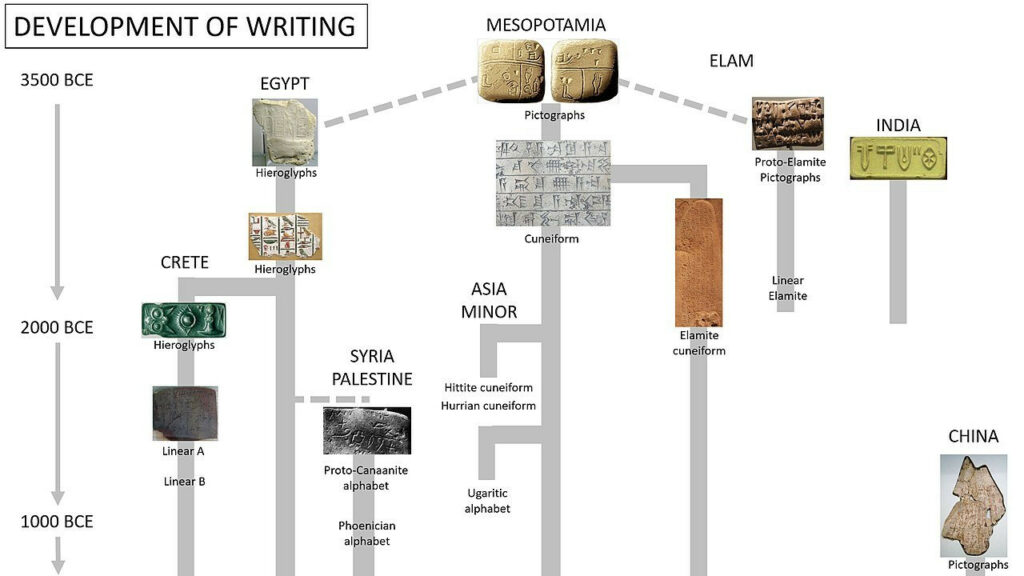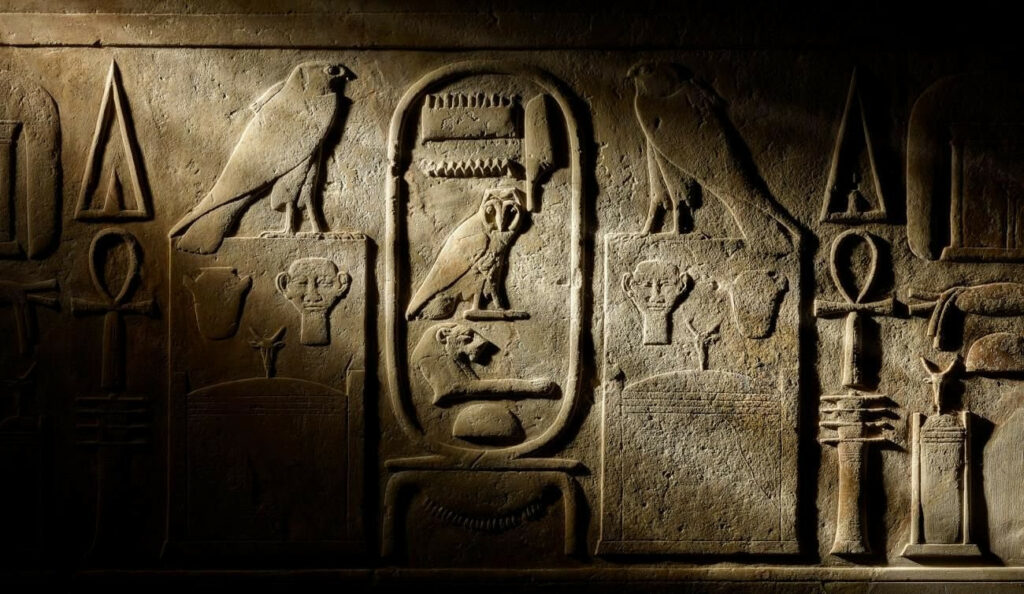Prologue: Primitive Markings

In the mists of antiquity, our ancestors first etched symbols and markings, mere precursors to the art of writing. These proto-writing systems, adorning cave walls and carved into stones, served as mnemonic devices, aiding in the recollection of events and ideas. Yet, they lacked the sophistication to convey the complexities of spoken language fully.
Chapter 1: The Birth of Writing
The Fertile Crescent: Cradle of Civilization

As civilizations blossomed in the fertile lands between the Tigris and Euphrates rivers, a remarkable transformation took place. Around 3400-3100 BCE, the Sumerians of Mesopotamia developed the first known writing system, cuneiform. Gradually evolving from pictographic symbols to a complex system of wedge-shaped characters, cuneiform allowed for the accurate recording of spoken Sumerian, paving the way for literature, laws, and the preservation of knowledge.
Ancient Scripts Emerge

The Sumerian innovation sparked a writing revolution across the ancient world. In Egypt, hieroglyphs emerged around 3250 BCE, their intricate symbols adorning temple walls and papyrus scrolls. The Indus Valley Civilization etched its enigmatic script onto seals, while the Chinese developed their logographic system by 1200 BCE. Mesoamerican cultures, too, gave birth to their own unique scripts, testament to the independent origins of writing in various corners of the globe.
Chapter 2: The Alphabet Emerges
The Phoenician Breakthrough

Around 1050 BCE, the Phoenicians, seafaring merchants of the ancient Mediterranean, revolutionized writing with the creation of the first true alphabet. Derived from Egyptian hieroglyphs, this innovative system assigned specific symbols to represent individual consonant sounds, paving the way for more efficient and widespread literacy.
The Greek Adaptation

The Phoenician alphabet found its most influential heir in the Greek script, adopted around the 8th century BCE. The Greeks added vowel symbols, transforming the Phoenician consonant-based system into a true alphabet capable of capturing the full breadth of spoken language.
Chapter 3: The Spread of Literacy
The Roman Empire and the Latin Alphabet

As the Roman Empire expanded, so too did the influence of the Latin alphabet, a descendant of the Greek script. This robust writing system became the foundation for the languages of Western Europe, ensuring the preservation and dissemination of knowledge throughout the vast Roman domains.
The Medieval Era and the Rise of New Scripts

The fall of Rome ushered in a period of profound cultural exchange. Arabic, with its elegant cursive script, became a preeminent language of scholarship, while the Cyrillic and Gothic alphabets emerged to serve the Slavic and Germanic peoples. The Renaissance later rekindled interest in Greek and Latin, setting the stage for the modern era of widespread literacy.
Epilogue: Writing in the Digital Age

Today, writing systems have transcended the boundaries of pen and paper, finding new life in the digital realm. From smartphones to computers, the written word continues to evolve, preserving our stories, ideas, and collective human experience for generations to come.

